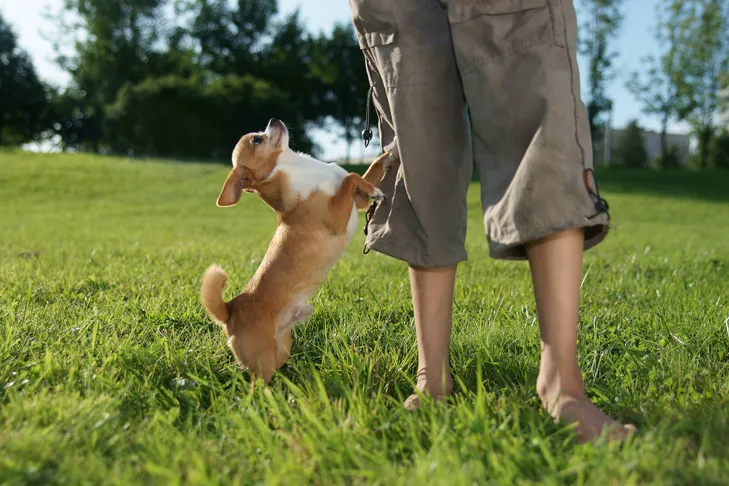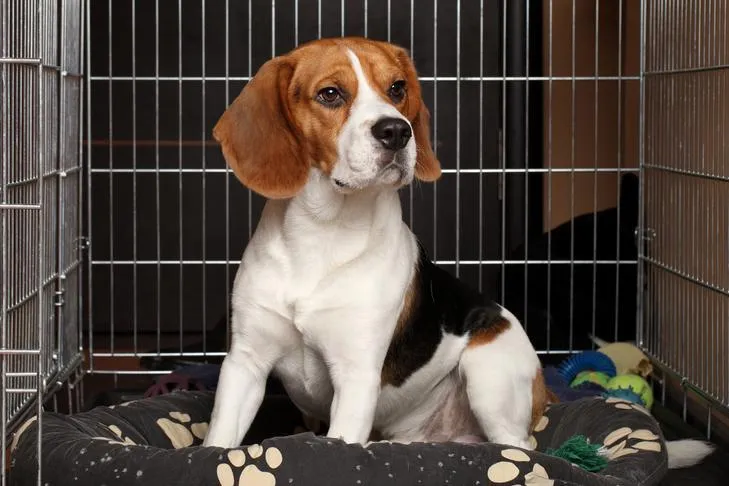Jumping up on people is a common and instinctual behavior for dogs. It’s their way of saying hello, often attempting to reach faces for a more personal greeting. For many dogs, this action is highly rewarding because it almost always elicits a response from humans. However, from a human perspective, a dog’s enthusiastic jumping can be problematic. It can lead to soiled clothes, particularly from muddy paws, and poses a risk of knocking over individuals, especially children and the elderly. Teaching your dog more appropriate greeting manners is not only more polite but significantly safer for everyone involved.
Understanding Why Dogs Jump for Greetings
Dogs are highly motivated by rewards, and positive attention is a powerful motivator for them. When a dog jumps up, they invariably receive a reaction from people, whether it’s a verbal reprimand, a physical push, or even a pat. All of these interactions, even negative ones, are forms of attention and can inadvertently reinforce the jumping behavior. For some dogs, being pushed away might even be interpreted as a playful wrestling match.
To effectively curb jumping behavior, it’s crucial to remove the rewards associated with it. This involves managing your dog’s environment to prevent them from practicing the unwanted behavior and, importantly, teaching them a more suitable alternative for greeting people.
 Nikolay Titov/Getty Images Plus via Getty Images
Nikolay Titov/Getty Images Plus via Getty Images
Developing Alternative Greeting Behaviors
While completely ignoring a jumping dog might theoretically lead to the behavior ceasing due to lack of reward, this approach is impractical in real-world scenarios. Not everyone you encounter will understand or follow the rules of ignoring jumping. Furthermore, this can be a source of frustration for your dog. Instead, they need to be explicitly taught what is expected of them.
The desired greeting behavior is up to you and your dog’s temperament. You might aim for all four paws staying on the ground, or you might prefer your dog to sit or lie down when greeting someone. The key is to guide them on what you want them to do, rather than solely focusing on what you don’t want. For instance, teaching a dog to “sit” for greetings is generally easier than trying to enforce “don’t jump.”
Training for ‘Four on the Floor’ Greetings
To teach your dog to keep all four paws grounded during greetings, you can strategically use treats placed on the floor. This method aims to preemptively reward your dog for staying down before they even consider jumping. Here’s how to implement the ‘four on the floor’ technique:
- Initiate the Greeting: With your dog on a leash, have someone approach them.
- Preempt with Treats: Just before the person reaches your dog, toss several treats on the floor.
- Reward Calmness: While your dog is busy eating from the floor, have the person calmly pet and greet them.
- Manage Duration: Before your dog finishes the treats, have the person step back.
- Repetition and Extension: After several repetitions, repeat the steps. This time, extend the greeting duration and continue to scatter treats on the floor throughout the interaction.
- Phased Transition: Once your dog consistently keeps all four feet on the ground, allow them to greet the person first before you start placing treats on the ground.
- Fade the Treats: Gradually reduce the number of treats given until the greeting itself becomes the sole reward.
The success of this method hinges on your timing with the treats. You must anticipate your dog’s jumping instinct and offer the reward before the jump occurs. If your dog does jump, the person should turn away, and you should stop dispensing treats. Over time, your dog will learn that keeping all four paws on the floor results in attention and rewards, while jumping leads to nothing.
how can i stop my puppy jumping up
 ©otsphoto – stock.adobe.com
©otsphoto – stock.adobe.com
Teaching ‘Sit’ for Greetings
An excellent alternative greeting behavior is teaching your dog to sit for attention and hellos. Similar to the previous method, your dog will learn that a seated position leads to positive interaction. When they stand up, the attention will cease. Follow these steps to train sit for greetings:
- Secure the Leash: Tether your dog’s leash to a doorknob or a sturdy piece of furniture.
- Cue the Sit: From a distance, ask your dog to sit. If they comply, approach them calmly. If they stand up, return to your starting point and repeat the sit cue. If they remain seated, proceed to quietly praise and pet them. As soon as they stand up, turn and walk away.
- Increase Excitement: As your dog grasps the concept of sitting for greetings, gradually make your approaches more engaging and exciting.
- Introduce Others: Once your dog reliably sits for greetings with you, begin practicing with friends and family members, starting again from step one.
The more your dog practices the “sit” command in various contexts, the easier it will become for them. Teaching “sit” for greetings will be more effective if your dog already understands how to sit reliably, even with distractions. Instilling “sit” as a fundamental response before daily activities like going outside or receiving meals will make the greeting sit much easier to train.
how to get your dog to stay off the couch
 ©FotoJagodka 2012- stock.adobe.com
©FotoJagodka 2012- stock.adobe.com
Preventing Jumping While Training is Underway
During the training period for an appropriate greeting behavior, it’s essential to manage your dog’s actions to prevent them from practicing jumping. If your dog has a solid “go to your place” command, you can direct them to their mat or crate whenever the doorbell rings. Alternatively, using a dog gate at the entrance can prevent your dog from reaching visitors. Keeping your dog on a leash when guests arrive also provides a direct way to manage their jumping.
Another effective management tactic is to have toys and treats readily available near the front door. You can toss a reward away from the entrance to keep your dog occupied as your visitor enters. Your guest can also participate by using a treat or toy to reward your dog for a polite greeting.
Preventing jumping when walking your dog can be particularly challenging, as you cannot expect every stranger to adhere to your training rules. Until your dog consistently greets familiar people appropriately, it’s best to avoid interactions with strangers on walks. Instead, try to capture your dog’s attention with a “watch me” cue or by using a squeaky toy, allowing the stranger to pass by without a greeting.
When your dog is ready to practice greeting people on the street, communicate your training plan to passersby. Ask them to ignore your dog if they do not follow the established rules. With consistent practice and management, your dog will soon learn to greet people politely, whether at your doorstep or while out and about.
